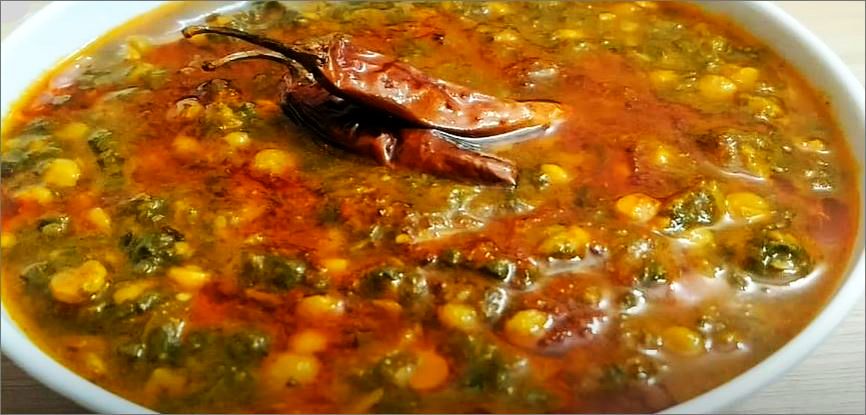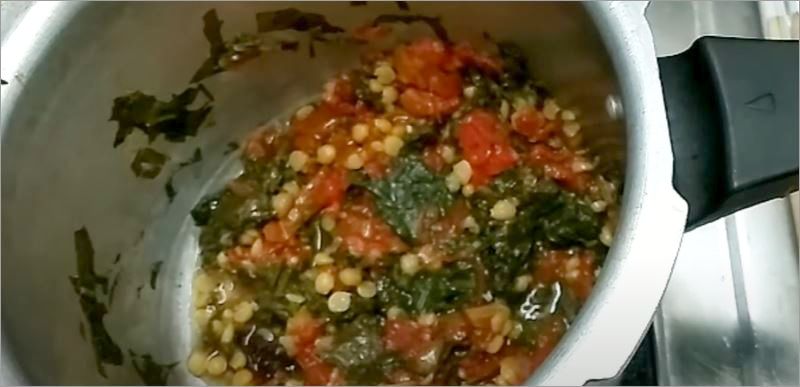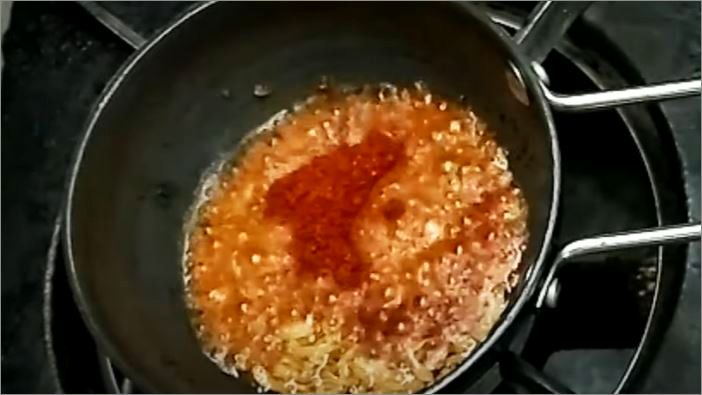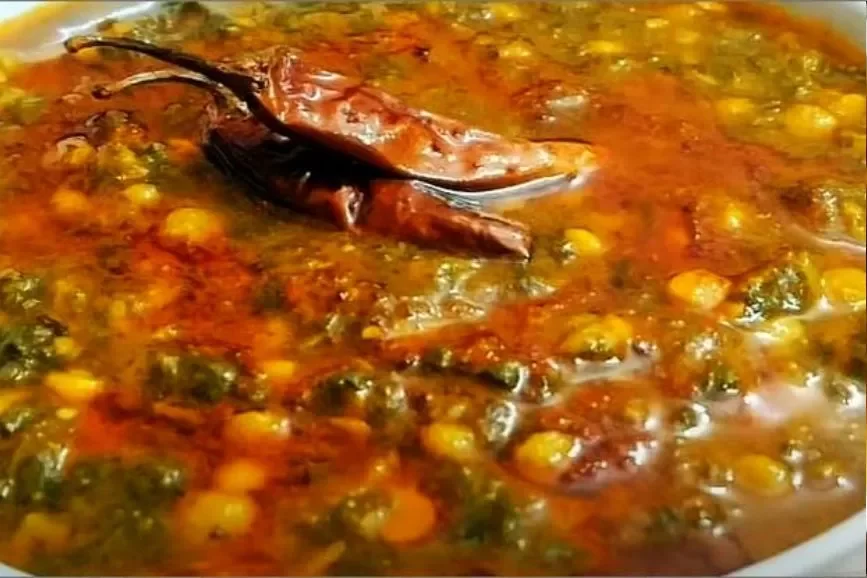A well-liked delicacy from Sindhi cuisine, which is renowned for its distinctive fusion of flavors and spices, is Sindhi style Sindhi Sai Bhaji. The combination of vegetables, lentils, and flavorful spices in this recipe is healthy and nourishing. The name “Sai Bhaji,” which means “Green Vegetable Curry” in Sindhi, comes from the bright green color of the vegetables that are used to make the meal.
Sindhi Sai Bhaji
The unique Sindhi Sai Bhaji can be served as a side dish or as a main entrée. It is a great comfort food for a cold winter night and is typically served with rice or toast. Among the Sindhi community, meal is frequently prepared for holidays and other special events.
In addition to being delicious, the dish provides several health advantages. Vegetables and lentils work well together as a source of protein, fiber, vitamins, and minerals. The nutritious content of the dish is also increased by the inclusion of fresh greens such as spinach, dill, and fenugreek leaves.
The meal known as Sindhi Sai Bhaji has been handed down through the generations and is ingrained in Sindhi culture. People all around the world like it, which is a testament to the region’s rich culinary legacy.

Ingredients
Now, let’s check the ingredients for a Sindhi style Sindhi Sai Bhaji dish that will serve 4-6 people, these are the general components and approximate serving sizes:
Spinach – 2 cups (chopped)
Dill leaves (soya leaves – not soya bean) – 1 cup (chopped)
Fenugreek leaves – 1 cup (chopped)
Tomatoes – 2 (chopped)
Onion (chopped) – 1
Cloves of garlic (minced) – 4-5
Ginger slice (minced) – 1 inch
Green peppers (chopped) – 2 to 3
Bengal gram (chana dal), soaked for thirty minutes – half a cup
Split black gram (urad dal) – soaked for 30 minutes – half a cup
Cumin seeds – 1 teaspoon
Mustard seeds – 1 teaspoon
Turmeric powder – 3/4 teaspoon
Red chili powder – 1 teaspoon
Coriander dried – 1 teaspoon
Garam masala powder, 1 teaspoon
Salt per taste
Oil – 1.5 teaspoon
Water – 3cups
Once you are ready with all the above items, follow step by step guide to preparing Sindhi Sai Bhaji.
Clean and soak Bengal grams and split black grams should be cleaned and soaked in water for 30 minutes.
Now heat two tablespoons of oil in a pressure cooker, then add the cumin and mustard seeds. Once they start crackling, add the chopped onions, ginger, and garlic and saute them for some time. Once the onions are transparent, saute for another 2 to 3 minutes.
Then add, three cups of water and the soaked Bengal gram and urad dal should be added to the pressure cooker. Now add salt, red chili powder, coriander powder, and turmeric powder can all be added. Mix thoroughly.
Mix well before adding chopped tomatoes and green chilies to the pressure cooker. Put the pressure cooker’s lid on and cook for three whistles on high heat. Cook for an additional five minutes after reducing the flame.
Put out the flame and permit natural pressure release. Open the pressure cooker’s lid, then add the chopped spinach, dill, and fenugreek leaves. Mix thoroughly.

Put the pressure cooker’s lid on and cook for one whistle on high heat. Put out the flame and permit natural pressure release.
Open the pressure cooker’s lid after the pressure has been released, then stir in the garam masala powder. Mix thoroughly.
Once all is well cooked and mixes well, let’s add some tadka to it. Heat some oil or ghee (clarified butter) in a small pan and add chopped ginger, and mustard seeds. Switch off the flame and add red chili powder. Now add this to the prepared Sindhi Sai Bhaji in the cooker.

You may also cook the dal and vegetables in a saucepan on the stove if you don’t have a pressure cooker. Simply partially cook the soaked dal in a pot with water, spices, and veggies before adding the vegetables and continuing to cook until everything is well heated through and soft.
Sindhi Sai Bhaji goes in really well combined with Bhugal Chawal {Rice}, in combination with fruit mango.


Wow, superb blog format! How lengthy have you been running a blog for?
you make blogging glance easy. The whole look of your web site is
wonderful, let alone the content material! You can see similar: dobry sklep and here sklep internetowy